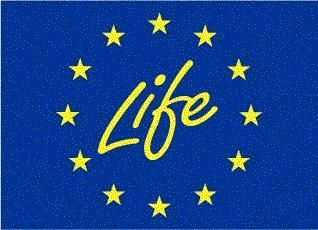 |
LIFE05 TCY/ROS/000143 |
|
||||

|
|
|
 |
|
||||||||||
|
||||||||||
Removal of solid domestic waste is made under contracts with housing-services offices, enterprises and organizations. Some of the enterprises take out waste to the deposit independently.
|
||||||||||
|
||||||||||
Three large enterprises: Limited Company "Kaliningradvtorresursy", Limited Company "Kaliningradvtormet", Open Company "Kaliningradtsvetmet" collect secondary material resources (paper, cardboard, textiles, and metal scrap). A number of small enterprises also collect metal scrap. There are 4 receiving points of secondary material resources collection in the city. In 2005 6.0 thousand tons of paper, 0.1 thousand tons of glass, 0.5 thousand tons of textiles were collected in Kaliningrad. For example, in 1990 13.274 thousand tons of paper and 1.704 thousand tons of textiles were collected for recycling. Work with waste at a city level is regulated by both federal and regional laws and regulations. "Tentative Order of Handling Waste on the Territory of Kaliningrad", 'Regulation on Collection and Processing of Subject to Reclamation Vehicles and their Operation Products" are elaborated and are in force in Kaliningrad. There are a number of resolutions of the mayor of Kaliningrad:
|
||||||||||
Thus, in Kaliningrad there is a wide approved legal and regulation base in the sphere of collection, transportation and burial of waste and material and technical basis however the sanitary condition of the city territories at present leaves much to be desired. The ground for the situation is in absence of system approach to solution of this most urgent problem of the city infrastructure. Problems with solid domestic waste recovery in Kaliningrad are due to the following reasons. First, there is lack of such an important document as the Master plan on clearing the city with legible legislative, normative and technical and organizational aspects of activity for the participants of collection, transportation and reclamation of solid domestic waste. There are a number of programs, elaboration and implementation of which assumes system approach. Here are defined three groups of methods: organizational, technological and technical. Second, there is no circumspect system of separate collection of domestic waste and its reclamation. For this reason a large quantity of valuable secondary raw material is taken out to the dump and becomes a source of environmental contamination, causes excess expenditure of material resources allocated to the city communal services. Third, there is a lack of solid waste processing system that in accordance with the latest international requirements should comprise the following elements: separate collection and storage posts, range for burial of solid domestic waste or an incinerate factory with corresponding infrastructure that would guarantee observance of environmental protection requirements. Fourth. For successful realization of the Master plan on clearing Kaliningrad and solid waste recycling within its framework requires prompt development of ecological education and training system. And this system would require city's legislative, methodical and financial support. Sphere of its application is all age groups of the city population: beginning from preschool children to pensioners. Mass media are of special importance here. To realize the «Program on improvement of ecological situation in Kaliningrad in 2006-2008» in the city of Kaliningrad has developed a program complex of waste motion registration «Information system of waste handling in urban district «City of Kaliningrad»». There is no analog to this program complex in Kaliningrad so far. The Program complex Information system of waste handling allows to develop common database of nature managers (the enterprises dealing with dangerous waste), a database of waste storing units, waste burial, available installations on waste processing, etc. Information system of waste handling introduction in Kaliningrad will provide complex monitoring of generation, transportation, accommodation and processing of waste. It will allow analysing normative and actual formation of waste, build-up tariffs on waste collection, storage and transportation, payments for waste accommodation in ranges and payments for negative environmental impact. |
||||||||||
Monitoring of atmospheric air
|
||||||||||
|
||||||||||
|
At the same there is reduction in emissions in Kaliningrad due to use of liquid fuel at the enterprises of wood, wood processing and pulp and paper industries, alongside with reduction of output at the mechanical engineering enterprises and metal working, transport, communication enterprises. Motor transport still remains significant source of pollution with emissions of 83.8% of total amount. Regular supervision over quality of atmospheric air is carried out by the Kaliningrad center on hydrometeorology and monitoring of an environment only in the city of Kaliningrad. Supervision over a condition of atmospheric air is made at five stationary posts daily, except days off at 7 a.m., 1 p.m. and 7 p.m. local time. In 2003 a computerized station "SKAT" is installed at one of the posts; it continuously tracks condition of atmospheric air. Quality of air in Kaliningrad is characterized by the third gradation: air pollution is high, adverse for health. Analysis of data on quality of atmospheric air in city for the last 5 years testifies that basically there are no essential changes in concentration of the defined impurity substances except for the suspended particles, nitrogen dioxide, nitric oxide and ammonia; they show some increase in average annual values. Negative tendency is observed for sulfur dioxide, carbon oxide and carbon disulfide. |
|